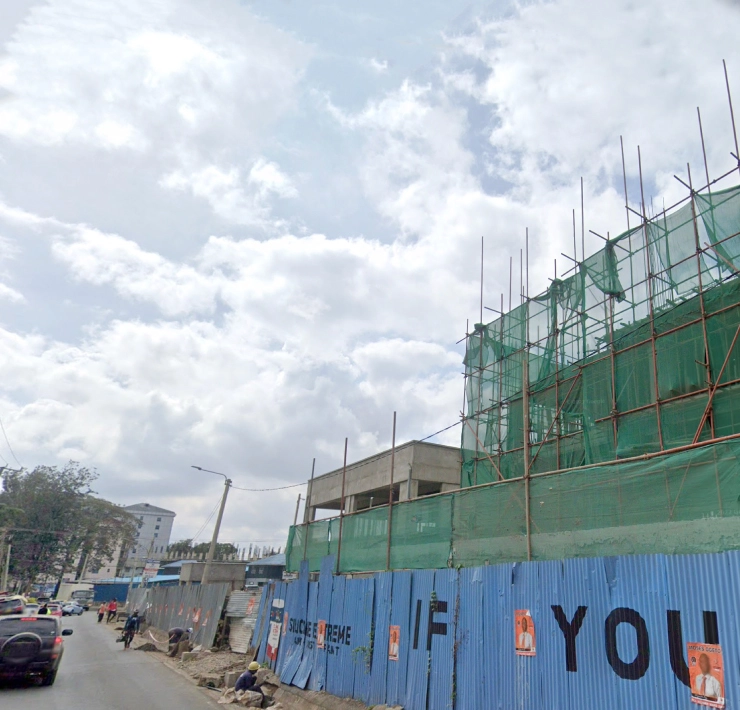Nairobi has a long, complicated history with slums. Their origin, according to this handy inventory of slums by Irene Karanja and Jack Makau, can be traced back to the refusal by colonialists to permit and provide for African workers to live with their families in the city, skewed land distribution among racial groups and subsequent rural-urban migration.
Until the good people at the Kenya National Bureau of Statistics came to our rescue, Kibera – now Kibra – had a reputed population in the millions and was the archetypal slum. The word ‘slum’ is used disdainfully, and so calling Kileleshwa and Kilimani vertical slums is meant to point to visible decline and pine for better days gone by.
A recent story by Citizen TV highlighted how haphazard development has affected the quality of life there. Massive apartment buildings are being erected with no regard for open spaces, water, sewerage and traffic, and homeowners who risk a drop in their considerable property values are up in arms.
But really, this is nothing new.
This is the same Nairobi in which public green spaces are grabbed, buildings collapse, residents can’t sleep on a weeknight because bars won’t let them and drainage can’t stand the rainy season. The story revolves around a property on Kilimani’s Kindaruma Road whose construction in April 2022 was not as far advanced as it is today.
According to letters displayed in the video, a planning official denied approval that had been granted for a development due to certain shortcomings: the building plans were not properly drawn, there were too many apartments for the land parcel, a setback on the basement was not observed and no traffic management report was handed in.
Subsequently, another letter revealed that upon appeal, a new approval had been granted. We don’t see the new approval, only the letter referring to it. So we know nothing about the new conditions it imposed and whether the earlier complaints by residents were ever dealt with.
This case is an excellent illustration of why Nairobi’s planning process should be more transparent. Approval for such a massive development should have been decided at a public meeting, where the technical committee voted in public. A report by the county explaining the rationale for the granting or denial of approval ought to be made public as well. The contents of the letters reporter Hassan Mugambi got his hands on, for which he should be commended, ought to have been public.
In the video, the developer – who does not speak on camera – tells the reporter that Nairobi has no functional policy, and developments over the last decade have not complied with the policies imposed by the “defunct City Council of Nairobi.”
That’s an important, far-reaching claim that should be put to the county government, but this does not happen. So we are left cradling the assumption that some see the lack of a residential development policy as a good thing.
When he spoke, Nairobi Governor Johnson Sakaja stated that there are “around 735” cases in court. That’s an eye-popping number. Any evidence? Assuming it’s all true, one or two examples wouldn’t have hurt.
The most worrying part of the whole saga revolves around the narrative in the headline, of massive apartment buildings turning upmarket suburbs into concrete slums. The current densification of suburbs like Kilimani and Kileleshwa is supposed to be inevitable, according to unnamed “experts” for whom no track record or credentials are provided. It’s not clear how this expertise is established, if at all.
The argument goes that since Nairobi’s population is ever-growing, parts of the city that were previously dominated by single family-homes and other low-density uses must accept high-density developments. It’s passable in theory, but it flies in the face of the buildings which eventually get constructed with no provision for sewerage and road capacity, lowering the quality of life for the entire “prime” neighbourhood.
Ever since Ebenezer Howard’s Letchworth, the suburb has represented refuge from the chaotic city centre. That may have worked in the 19th century when populations were far smaller, but not today.
Those massive apartment blocks in Kilimani and Kileleshwa without adequate sewer and the closing down of the old Hilton Hotel over its unattractive CBD location are all part of the same story. We are locked into an unsustainable habit of creating polluted concrete messes which we then abandon for newer, sewer-less suburbs, building sprawl on land that should be growing crops. Meanwhile, people in those countries we like to fly to live in the very hearts of their cities, day and night. Their historic city hotels are thriving.
If Nairobi is to be liveable, we will have to fix the problems we run away from. The City Hall will have to grow a spine and respond to bad developments with a firm “No”.

